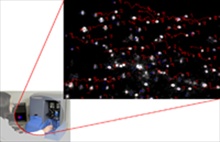Members Login

Channels
Special Offers & Promotions
NanoSight delivers the world's most versatile and proven multi-parameter nanoparticle analysis in a single instrument now adds zeta potential
 NanoSight visualizes, measures and characterizes virtually all nanoparticles. Particle size, concentration, aggregation and zeta potential can all be analyzed while a fluorescence mode provides speciation of labeled particles. NanoSight provides real time monitoring of the subtle changes in the characteristics of particle populations with all of these analyses uniquely confirmed by visual validation.
NanoSight visualizes, measures and characterizes virtually all nanoparticles. Particle size, concentration, aggregation and zeta potential can all be analyzed while a fluorescence mode provides speciation of labeled particles. NanoSight provides real time monitoring of the subtle changes in the characteristics of particle populations with all of these analyses uniquely confirmed by visual validation.
Zeta Potential Nanoparticle Tracking Analysis (Z-NTA) adds measurement of surface charge to simultaneous reporting of size, composition (light scattering intensity), fluorescence and count. As with NTA, the core of NanoSight's world-leading nanoparticle characterization systems, it collects data on a particle-by-particle basis. No other methodology comes close to providing such simultaneous, multiparameter nanoparticle characterization. Polydisperse and complex suspensions are readily characterized. No labelling is required but a fluorescence mode option is available to further differentiate suitable-labelled sub-populations. All data sets are validated by real time observation of particles moving under both electrophoretic and Brownian motion.
The user benefits are clear to define. Variations in zeta potential with size are analyzed with positively and negatively charged particles being reported separately even when they exist together. Sub-populations of similar sized particles of different materials, differentiated by their propensity to scatter light, are separately reported and counted. As with size distribution measurement, changes in Zeta Potential distribution with pH, concentration and temperature may be studied. Similarly, aggregation and flocculation may be studied quantitatively in real-time. Suitable labelling can highlight one sub-population for analysis despite high background noise.
For further information please click here
Media Partners


